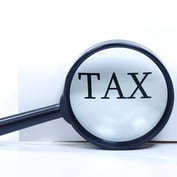What You Need to Know
- Tax-loss harvesting should be personalized based on each client's characteristics and market conditions, a Vanguard tax expert says.
- Over long periods of time, about 60% of the differences in tax-loss harvesting result from investor profiles.
- The rest comes from market conditions that are outside of the control of the advisor and client.
As 2021 starts winding down, many advisors will likely start ramping up their work related to clients’ tax-loss harvesting, according to Joel Dickson, principal and head of enterprise advice methodology at Vanguard.
For advisors, tax-loss harvesting should not be a one-size-fits-all proposition and, depending on investor characteristics and market conditions, a wide range of outcomes can be realized, he told ThinkAdvisor on Tuesday in a phone interview.
Much of that variation is driven by the specific characteristics of each investor, he said. Based on the findings of recent Vanguard research, he said, “over long periods of time, [through] different market environments and so forth, about 60% of the differences in tax-loss harvesting result from the investor profiles.”
The remaining 40% come from factors that are “outside of the investor and the advisor’s control” — mainly, the “market environment you’re in,” he said.
Advisors should take all of these factors into account when tax-loss harvesting, he added.
Here are five key issues advisors should consider when tax-loss harvesting:
1. What is the tax rate that the specific client faces when harvesting losses?
This is the most obvious issue and can perhaps be figured out easiest.
2. What is the tax rate going to be when the client will potentially realize any gains from the harvesting?
In other words, when liquidating or withdrawing the investment, what is the projected tax rate for the client going to be?
For one thing, there could be a change in tax rates due to pending or proposed tax changes, especially if your client has a high net worth.
Important to factor in, Dickson said: How does the future expected tax rate for a specific client compare to the current tax rate? And “how many taxable gains do you expect this client to have from kind of all sources” without factoring in any tax-loss harvesting?









 October 27, 2021 at 11:08 AM
October 27, 2021 at 11:08 AM











